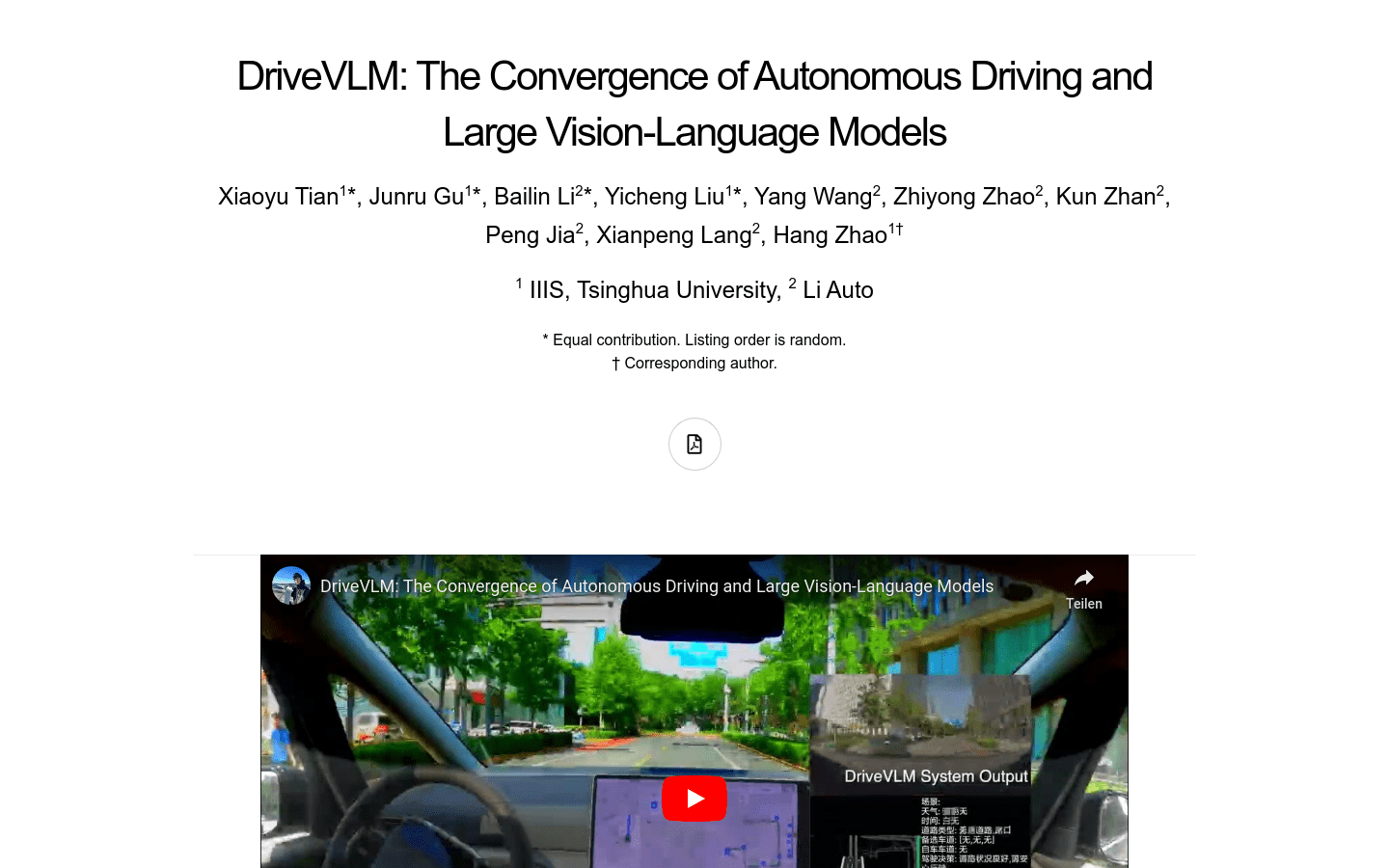

Drivevlm
Overview :
DriveVLM is an autonomous driving system that leverages visual language models (VLMs) to augment scene understanding and planning capabilities. The system employs a unique combination of reasoning modules, encompassing scene description, scene analysis, and hierarchical planning, to enhance comprehension of complex and long-tail scenarios. Addressing the limitations of VLMs in spatial reasoning and computational demands, DriveVLM-Dual was developed as a hybrid system, integrating the strengths of DriveVLM with traditional autonomous driving pipelines. Experiments on the nuScenes and SUP-AD datasets demonstrate the effectiveness of DriveVLM and DriveVLM-Dual in handling complex and unpredictable driving conditions. Ultimately, DriveVLM-Dual has been deployed in production vehicles, validating its efficacy in real-world autonomous driving environments.
Target Users :
DriveVLM is geared towards researchers and engineers in the autonomous driving field, as well as enterprises and organizations seeking to enhance the scene understanding and planning capabilities of their autonomous driving systems. This technology is particularly well-suited for autonomous driving systems that require handling complex and long-tail scenarios prevalent in urban environments.
Use Cases
In urban environments, DriveVLM can recognize and handle complex road conditions and subtle human behaviors.
The deployment of DriveVLM-Dual in production vehicles showcases its applicability in real-world autonomous driving contexts.
Experiments on the nuScenes dataset demonstrate the effectiveness of DriveVLM in managing complex and unpredictable driving situations.
Features
Accepts image sequences as input and outputs hierarchical planning predictions through a reasoning-based chain-of-thought (CoT) mechanism.
Optionally integrates traditional 3D perception and trajectory planning modules to achieve spatial reasoning capabilities and real-time trajectory planning.
Develops scene understanding datasets through data mining and annotation processes.
Utilizes a team of annotators for scene annotation, encompassing scene description, analysis, and planning.
Conducts experiments on the nuScenes and SUP-AD datasets to validate the system's effectiveness.
DriveVLM-Dual deployment in production vehicles demonstrates its practicality in real-world autonomous driving scenarios.
How to Use
1. Prepare a sequence of images as input data.
2. Input the image sequence into the DriveVLM model.
3. Utilize DriveVLM's reasoning mechanism for scene description, analysis, and planning.
4. Optionally, integrate 3D perception and trajectory planning modules as needed.
5. Obtain hierarchical planning prediction results from the DriveVLM model.
6. Deploy DriveVLM-Dual in a practical autonomous driving environment to evaluate its performance.
Featured AI Tools
Fresh Picks

Gemini 1.5 Flash
Gemini 1.5 Flash is the latest AI model released by the Google DeepMind team. It distills core knowledge and skills from the larger 1.5 Pro model through a distillation process, providing a smaller and more efficient model. This model excels in multi-modal reasoning, long text processing, chat applications, image and video captioning, long document and table data extraction. Its significance lies in providing solutions for applications requiring low latency and low-cost services while maintaining high-quality output.
AI model
69.3K

Siglip2
SigLIP2 is a multilingual vision-language encoder developed by Google, featuring improved semantic understanding, localization, and dense features. It supports zero-shot image classification, enabling direct image classification via text descriptions without requiring additional training. The model excels in multilingual scenarios and is suitable for various vision-language tasks. Key advantages include efficient image-text alignment, support for multiple resolutions and dynamic resolution adjustment, and robust cross-lingual generalization capabilities. SigLIP2 offers a novel solution for multilingual visual tasks, particularly beneficial for scenarios requiring rapid deployment and multilingual support.
AI model
59.6K


